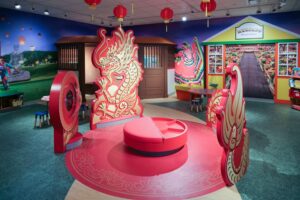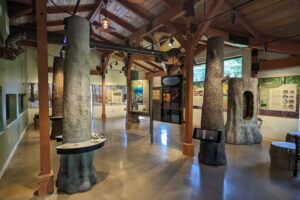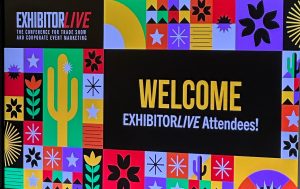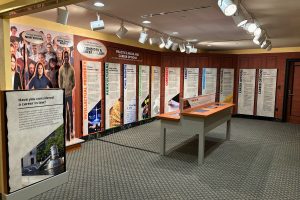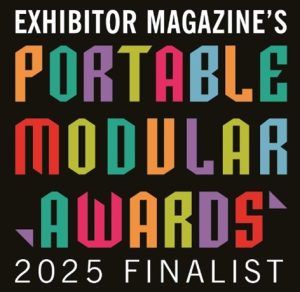Museums tell the stories of cultures, societies, and humanity itself. They connect people with ideas that can inspire. From helping children explore science to remembering and learning from tragedy, every museum, exhibit, and interactive experience, done right, makes the world a more enlightened place. But doing it right takes more than an impressive collection of artifacts or passion for the subject. How can museums and interpretive facilities combine artifacts, historic events, and passion into experiences that attract people and tell the right story for every generation?
There is no doubt that museums are experts in storytelling. While their story may be vastly different from your brand’s, you can learn from their approach and apply “museum planning” theory to your next event.
1. Take an Interpretive Planning Approach
Interpretive planning is the first step in preparing for the design process, specific to learning institutions such as museums. When Senior Designers Matthew Brandeberry and Josh Koenig begin the design process, they first ask for the “why”. “The why is the guiding light of your space – assuring your goals are met and you get your desired outcome,” said Koenig.
Be sure to ask yourself, why are we attending this show? Who are we hoping to attract to the booth? By attending this show, what behaviors and actions are we hoping to motivate?

“You need people to want to connect with what you’re providing. For example, with Airstream, their brand has gotten to know their audience’s culture and use those stories to inspire prospects to join that culture by buying their products,” said Brandeberry. “It’s important to identify who you’re trying to inspire change in and identify the resources you have to capture them.”
When telling your story, remember that you’re not just trying to sell a product – you’re selling an experience or something that your visitors need in order to improve their lives or their own business. “It’s easy on the trade show floor to be about flash and technology rather than the message. Using an interpretive planning approach will prevent you from becoming a gimmick. Don’t overlook this stage – it’s easy to just come up with a checklist and image, but it’s important to understand your intent and your why,” said Koenig.
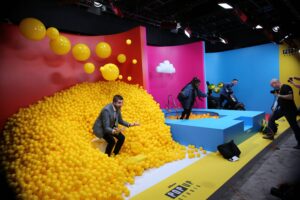

Taking an interpretive planning approach will help you organize your thoughts and ideas and choose the best message for your trade show booth. Throughout the storytelling process, your “why” and planning will be the theme. The earlier you define these parameters, the better your booth experience will be for visitors.
2. Plan Precisely but Flex Freely
Meticulous planning is key to a successful trade show booth, as it is absolutely essential for an entire museum. Work closely with your design and fabrication partner through the early planning stages. Their expertise can help you think through every detail, including:
- How the booth will function
- Where interactive pieces should be placed
- How to integrate audio-video elements
- How materials will be used to decrease costs on shipping and storage, meet show requirements, and function so that it works for any event
- Traffic flow
Even with the best planning, however, some things come to light during the installation and must be adjusted. When changes happen on the fly, be sure your partner can handle them without skipping a beat. Reagan Grau, Director of Collections at the National Museum of the Pacific War, saw the value of this flexibility in action. “When the George H.W. Bush Gallery was being installed, there was a graphic panel blocking part of a word on the wall behind it. As soon as they saw the problem, ECI painted new lettering on the wall to make it work. They fixed the issue before it even became an issue. They’re great at handling improvements like that on the fly.”
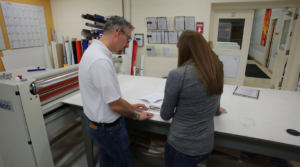

If you choose to work with multiple partners for different parts of the project, be sure they work well together and support each other. A fabricator may discover issues the designer didn’t foresee. Chris Frison, Associate Vice President and Senior Project Designer at D|G Studios, has worked with many different fabricators and installers. “I like the way ECI doesn’t just find problems, they find solutions,” he says. “They always come to us with a solution to whatever issue they discover. Not every company I work with does that. I can rely on their next-level detailing to be sure that, together, we deliver the highest quality end-result.”
When multiple companies are involved, communication is critical. The best partners will talk to each other, giving updates, discussing issues, and figuring out solutions to keep your project moving forward. “Their level of communication spoils you,” adds Frison. “You start to expect it from all other companies you work with, but you just don’t get it the way you do with ECI.”
3. Prioritize Relationships with Visitors AND Partners
A museum experience is about the relationship between the subject matter and the visitor. For trade shows, the same concept applies. More than a collection of artifacts, however impressive it may be, and a museum experience must make a connection with people. How will you reach their hearts and minds, transport them to a specific place or time, and leave them changed in some way?
First, the history must be accurate and authentic. While preserving history is the primary concern of any museum, it is also vital for gaining a visitor’s trust. If people distrust the authenticity of your message, they won’t engage with your exhibits and your story is lost. This goes for trade shows as well. You’re trying to build trust, awareness, and conversion centered on your brand. If the story of your business or products is inaccurate or unclear, you won’t be able to effectively accomplish your goals no matter the show.


Once you have the story down, then give visitors a compelling booth design and interactives. You know your subject better than anyone, but do you know how to create experiences that engage guests? A well-chosen partner does. The importance of this relationship cannot be overstated. “Once we had artifacts and space, we needed a story to tell and Exhibit Concepts, Inc (ECI) helped organize that story,” explains Dr. Marilyn Kosier, a key member of the board responsible for creating the Bradford Ohio Railroad Museum. “They also helped us cull down the items into a meaningful interpretation. Before, they were just displayed with no educational value. They have a way of developing a timeline and exhibit venues that create a comprehensive picture.”
Choosing the right partner for design, fabrication, and installation ensures your brand story is well protected, the booth and displays are high quality, and visitors feel connected to your story.
4. Remember the Big Picture
Sometimes it’s easy to get caught up in the details of the booth design or interactive experience, just as it would a single exhibit or interactives in a museum. And while each one is important, it’s just one part of your story. Don’t lose sight of the big picture. Prioritize the continuity of the guest experience throughout the booth, especially when you need to adjust to meet requirements at different shows.
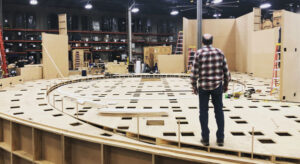

Think about your goals and objectives and at a high level, what is needed to meet them. Focusing on the smaller details throughout the process is also important, but narrowing in on the specifics early on could hinder your brand’s delivery of the message. Your goal is to attract potential prospects and as you move through the process, remember what you want visitors to take away from the experience you’re providing at your booth. This goes back to the interpretive planning approach – what is your why? How are you going to achieve it?
5. Use the Same Partner for Multiple Projects
Choosing long-term partners simplifies everything. It ensures a seamless guest experience and cuts out unnecessary steps for you with each new exhibit, expansion, or update. You know exactly what to expect in terms of quality and process. Plus, you save valuable time not having to find old files or get a new company up to speed on your organization and expectations.
This is exactly why the National Museum of the Pacific War has continued working with the same partner repeatedly. “We’re like an old married couple now,” says Director of Collections, Reagan Grau. “We know what to expect. We’re satisfied and not inclined to shop around.”
The more projects you work on together, the more invested they will be in your story. Counting on a partner that is both skilled and invested is very important to Kari Watkins, Executive Director at the Oklahoma City National Memorial and Museum. “This is sacred ground,” she explains. “And ECI has always shown the deepest sensitivity to that. They work overnight so visitors aren’t disturbed. I know I can leave them in the building, and they will honor the place as well as the exhibits while they’re here, even when no one else is around. They have always demonstrated great reverence and respect.”
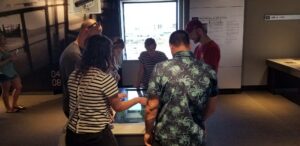

Chris Frison of D|G Studios adds, “It’s important to know the companies we’re working with. When clients use the same company for numerous projects, there is a mutual familiarity with the process, drawings, and timelines. You’re not starting from square one every time, which saves countless hours throughout the project.”
6. Make Lasting Connections
The best relationships last. Your goal for each visitor should be to make a connection that will inspire them to convert to a customer. Have you made that the goal for your professional relationships as well? Consider both a company’s level of professional competence and what future projects may look like. If you update an exhibit in 10 years, how likely is it you will be working with many of the same people?
“What we love about our 20-year relationship with ECI is that everything feels the same each time we work with them on something new, whether it’s big or small,” explains Kari Watkins. “We even work with most of the same people we worked with at the beginning, so there is not only a familiarity but a shared journey we can pull from when planning new ideas and projects.”


Jeff Salmons at Frontier Texas adds, “Even though there was a 9-year gap between projects, many of the key people were the same. They already knew the building, where we’d been, and our quality standards. We didn’t have to dig up old records or try to get anyone up to speed.”
These kinds of long-term relationships are also valuable in a crisis. Kari Watkins knows this first-hand. “When we had a serious flood, the ECI team was here within 24 hours helping with the protection and recovery of pictures and displays,” she says. “Because of their heroic efforts, we had little damage and no mold in any of our exhibits.”
This would ring true for trade shows as well. A partner that understands your business, your needs, and that has forged relationships with other partners and vendors is well-prepared to troubleshoot any issues that may arise come show time.
With a long-term relationship, you don’t have to wonder who to call in emergencies. And, as Jeff Salmon explains, “Not starting from scratch on every project saves time, work, and worry. We have confidence in the craftsmanship and the process because we’ve experienced it already.”
When you have passion, a story, and products to promote, the right approach can take your exhibits and your visitor experiences to the next level. Find your “why”, prioritize relationships, think strategically for the long-term, and choose your partners carefully. If you’re looking for a partner that cares about your story and will devote 40 years of experience to helping you tell it well, look no further than Exhibit Concepts.




